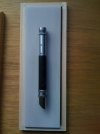I'm the complete opposite, gotta have the best steels and the best stones.
I feel that lower end steels can be a waste time to invest my best work to sharpen them to a high performing level. The edges just don't have any longivitiy, also I like that I can sharpen because I want to not because I have too. I feel most of the difficulty people have with high vanadium carbide volume steels is not have the proper stones to cut them.
. . .
I'll probably fold one day and just use 52100 and AEBL like Everybody else and cash in.
NOOOOOOOOOOOOOOOOOO !
I'm with you though. As easy as it is to sharpen the good stuff (with the right stones) why the freak would I want anything less ? ? ? ?
The only reason I fool around with all this soft squishy stuff (Wenger / Victorinox, Case and Boker Traditionals I'm look at you) . . . is that I like the handle shape, blade shape or need the specific tools in the multitools knives.
I'm just now reading / catching up on this thread.
For the most part if I can
not sharpen it on a translucent Ark it has my interest and if I can I'm passing over it for better steel. An exception is my Little Monster but I only use that on clean fruits and vegetables.
Hahahaha even my woodworking blades, the ones worth using, are A2 steel and better and A2 just polishes the surface of my big O' hard Ark and does nothing for the sharpness of the blade or "stroping" for deburing.
Part of the reason I am reading this thread is I have the hots for a little pocket black Arkansas stone ($15) but the only thing I could use it on is my SAKs and Case knives etc.
How is it for deburing those stainless steels ? From what Josh has told me Shapton Pro 5,000 is much superior even for the squishy steels like these.
((((I still want the stone though)))) ((((I don't know why))))
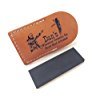
PS: and this thread sucks . . . what no photos ?
I just look at the pictures.



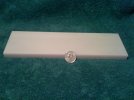
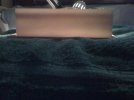
You can see what my A2 blade did to the stone while merely adding a final polish to an already frighteningly sharp edge on a woodworking plane blade (the shiny area). The entire surface of the stone was burnished like that I just couldn't capture it in a photo. I had to condition the brand new trans Ark stone using a diamond plate to take the instant glaze off.
Oh well the stone is nice to look at.
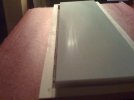
PS: no A2 was harmed in the making of this film (there was zero black swarf in the pores of the stone). I checked with this hand held microscope.
